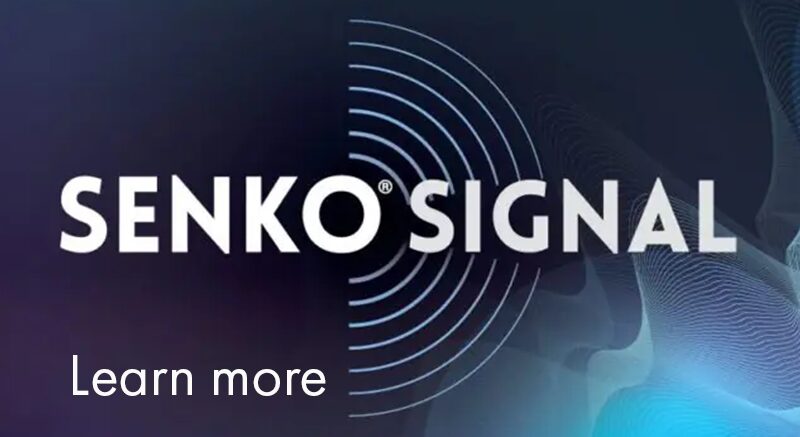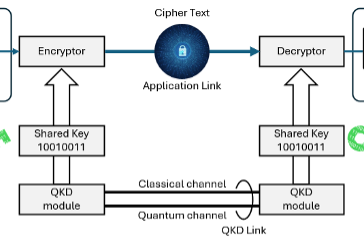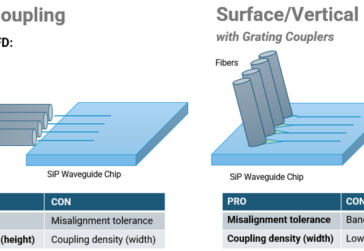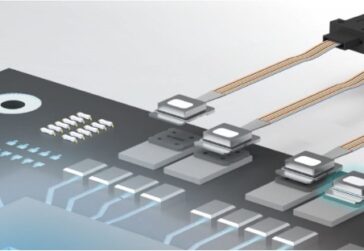Understanding the Fundamentals of Optical Fiber Technology
Optical fiber technology has revolutionized modern communications, allowing data to be transmitted quickly, efficiently, and over long distances with minimal signal degradation. This article explores the fundamentals of optical fiber technology, its components, principles of operation, types, and applications in today’s world.
- Introduction to Optical Fiber
Optical fibers are thin strands of glass or plastic that are used to transmit data in the form of light pulses. They enable high-speed data transfer with high bandwidth and low attenuation, making them ideal for telecommunication and internet networks. Optical fibers operate on the basic principle of light transmission, specifically taking advantage of the phenomenon of total internal reflection. Optical fiber is an integral component of modern telecommunications networks, data centers, medical applications, and automotive systems.
- Structure of Optical Fiber
An optical fiber typically consists of three main parts:
- Core: This is the innermost part of the fiber where light is transmitted. The core is made of highly pure glass or plastic and has a high refractive index. The diameter of the core varies depending on the type of fiber.
- Cladding: Surrounding the core is the cladding, which is made of glass or plastic with a lower refractive index than the core. The difference in refractive index between the core and cladding is crucial because it facilitates the phenomenon of total internal reflection, allowing light to be confined within the core and enabling it to travel long distances without escaping.
- Buffer Coating: The outer layer of an optical fiber, the buffer coating, is made from protective materials like plastic or polymer. It safeguards the fiber from external physical damage, moisture, and other environmental factors.
These three layers work together to ensure that the light signals remain intact as they travel through the fiber, minimizing signal loss or interference.
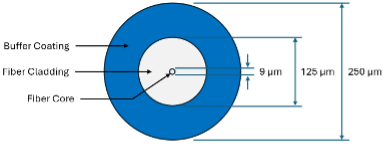
Dimensions of a typical SingleMode fiber
- Principles of Operation: Total Internal Reflection
The working principle behind optical fibers is total internal reflection. When light enters the fiber at a certain angle, it reflects off the boundary between the core and the cladding rather than passing through it, allowing the light to be guided along the length of the fiber. This requires the core’s refractive index to be higher than that of the cladding, creating an optical boundary.
The critical angle is the minimum angle at which light can strike the boundary between the core and cladding and still be reflected back into the core. If the light hits this boundary at an angle greater than the critical angle, it will continue to reflect within the core, propagating down the fiber with minimal loss.
This process enables optical fibers to carry signals over extensive distances with much lower attenuation than traditional electrical cables. Because light travels faster in a fiber than an electrical signal does in a copper cable, optical fibers can support higher data rates, which makes them particularly useful for internet and telecommunications networks.

- Types of Optical Fibers
Optical fibers come in two primary types: single-mode and multi-mode fibers. Each has distinct characteristics, uses, and benefits.
Single-Mode Fiber (SMF)
Single-mode fiber has a very narrow core, typically around 8-10 micrometers in diameter. It supports the transmission of light in a single path or mode, allowing it to transmit data over much longer distances with lower attenuation than multi-mode fibers. Due to its high capacity and low signal loss, single-mode fiber is widely used in long-distance telecommunication networks and high-speed data centers.
Multi-Mode Fiber (MMF)
Multi-mode fiber has a wider core, generally around 50-62.5 micrometers, which allows multiple modes or paths of light to propagate simultaneously. This type of fiber is typically used for short-distance communication, such as within buildings or on campuses, because the multiple light paths can cause modal dispersion, which limits the transmission distance.
- Advantages of Optical Fiber
Optical fiber technology offers numerous benefits, which have made it the preferred choice for high-speed data transmission. Optical fibers have significantly higher bandwidth than traditional copper cables, allowing them to carry more data over a single line. The reduced size and weight of optical fiber cables is a significant factor which enables the exponential growth of data consumption.
The signal degradation in optical fibers is minimal, enabling long-distance transmission without the need for frequent signal amplification, allowing a global submarine cable network linking continents.
Since optical fibers use light instead of electricity to transmit data, they are immune to electromagnetic interference, ensuring more reliable data transmission. Fiber optic cables are difficult to tap into without detection, making them more secure for transmitting sensitive information.
- Future of Optical Fiber
As data demand grows and technologies such as 5G and the Internet of Things (IoT) continue to expand, optical fibers are expected to play a more significant role. Researchers are working on developing advanced fibers capable of higher data rates, greater resilience, and enhanced flexibility. Innovations like multi-core fibers which increases the number of light transmission pathways, and hollow-core fibers which can carry data even faster by reducing the interaction of light with the glass core to reduce latency, may soon become commercially viable, further pushing the boundaries of optical fiber technology. However, these do not come without their challenges such as standardization of hollow core design, and the complication of fiber splicing.
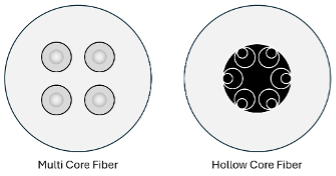
Conclusión
Optical fiber technology has transformed global communication, offering unmatched speed, reliability, and efficiency. Its unique properties of high bandwidth, low attenuation, and immunity to electromagnetic interference make it a foundational technology for modern telecommunications, data centers, and various other applications. As advancements in fiber optic technology continue, it is likely that optical fiber will remain the backbone of global connectivity, enabling faster and more secure data transmission in an increasingly connected world.
